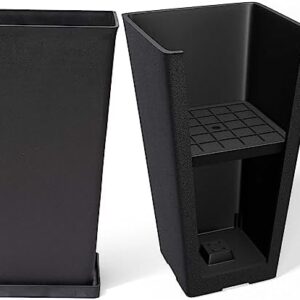Plants have a magical way of brightening up any room and bringing a sense of calm to our hectic lives. But if you’re like me, you may have struggled in the past with keeping your plants alive and thriving. Well, fear not! With a little bit of knowledge and a whole lot of love, you too can master the art of plant care and become a green-thumbed guru in no time.
First things first, it’s important to understand the needs of your plants. Just like us, plants have specific requirements in order to flourish. Different plants require different amounts of sunlight, water, and temperature, so it’s essential to do your research and know what each of your plants needs to thrive.
One of the most important aspects of plant care is sunlight. Some plants thrive in bright, direct sunlight, while others prefer indirect light or even shade. Be sure to place your plants in a location where they will receive the appropriate amount of sunlight for their specific needs. If you notice that your plant is wilting or losing its vibrant color, it may be a sign that it needs more or less sunlight.
Watering your plants is another crucial aspect of plant care. Overwatering can be just as harmful as underwatering, so it’s important to find the right balance. Most plants prefer to be watered when the top inch of soil is dry to the touch. Be sure to water your plants thoroughly, allowing the water to drain out of the bottom of the pot to prevent root rot. And remember, each plant has its own unique watering needs, so be sure to do your research and adjust your watering schedule accordingly.
In addition to sunlight and water, the temperature and humidity of your home can also affect the health of your plants. Most indoor plants prefer temperatures between 65-75 degrees Fahrenheit, so be sure to keep your plants away from drafty windows or hot radiators. If you notice that your plant’s leaves are turning brown or yellow, it may be a sign that the temperature or humidity levels are not ideal for your plant.
Another important aspect of plant care is regular pruning and grooming. Trimming dead or yellowing leaves can help promote new growth and keep your plant looking healthy and vibrant. Be sure to use clean, sharp scissors or shears to prevent damage to the plant. Additionally, regularly dusting the leaves of your plants can help them better absorb sunlight and nutrients, leading to healthier and happier plants.
Fertilizing your plants is another key component of plant care. While most potting soils contain nutrients, over time these nutrients can become depleted. Adding a balanced, water-soluble fertilizer to your plants every few weeks can help replenish essential nutrients and promote healthy growth. Be sure to follow the instructions on the fertilizer packaging and avoid over-fertilizing, as this can harm your plants.
Lastly, don’t be afraid to experiment and try new things with your plants. Every plant is unique, and sometimes it takes a little trial and error to find the perfect care routine for each of your plants. Don’t be discouraged if you encounter setbacks – learning to care for plants is a continual process of growth and discovery.
In conclusion, mastering the art of plant care is not as daunting as it may seem. With a little bit of knowledge, patience, and love, you too can become a skilled plant parent and enjoy the beauty and serenity that plants bring into your home. So go ahead, get your hands dirty, and watch as your plants flourish and thrive under your care. Happy gardening!






